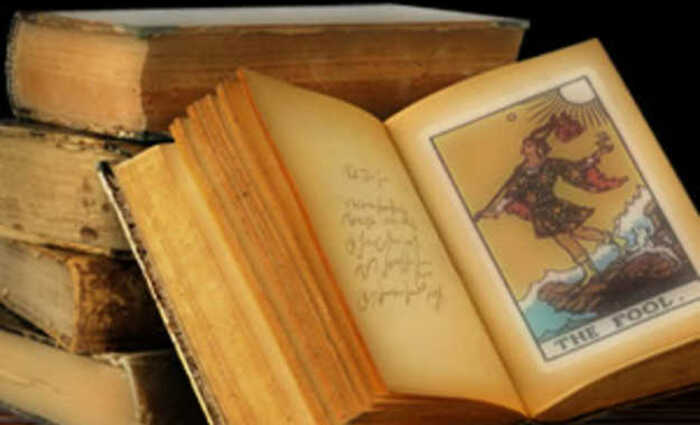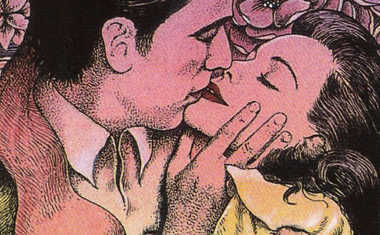
Origins of Catharism
Reveal the origins of the ancient Catharists
Part I: Origins of Catharism
Were the Cathari direct descendents of the ancient Gnostics? Yes, sorta, kinda. The Medieval Manichee by Runciman (1947, Cambridge University Press) is a dated but classic treatment of the subject. The influence of Runciman's work can be seen in the fact that the book was reprinted in 1955, 1982, 1984, 1988, 1991, and 1996. The book is a real goldmine for the English-speaking reader because it provides a comprehensive synthesis of the earlier French and German scholarly studies.
Runciman establishes that fundamental elements of Cathari practice go back to Gnosticism, specifically the Manichees (Burkitt, 1925). The Manichees were divided into initiated Elect and ordinary members called Hearers. The Cathari were divided into Perfecti and believers or Credentes. The Cathar initiation ceremony seems to be derived from the Manichaean ritual. Both distinguished between the Gnosis (knowledge) of the Initiate and the Pistis (belief) of the ordinary believer. Both avoided swearing and were vegetarians. Both gave an equal place to women who could be initiated as Manichaean Elects or Cathar Perfects. The parallels are too numerous and the details too close to be dismissed as coincidence.
We have a well-documented history of the Manichaean lineage. Manichaeanism developed into a Christian heresy, Paulicianism (Christie-Murray, 1976). The Paulicians were persecuted and driven into exile in Macedonia and Bulgaria where they developed into the Bogomils (Obolensky, 1948). The Bogomils were active in proselytizing and sent missionaries throughout Europe.
Many small sects, such as the Messalians, may have contributed to Catharism (Runciman,1947), but several lines of evidence point to the Bogomils as the chief sculptors. Many details of the Cathar initiation ritual, the consolamentum, are modeled after the Bogomil ceremony. Cathar practices, such as no meat, no wine, no oaths, icons despised, passive resistence, marriage discouraged, asceticism, owning no property or money, appear to come directly from the Bogomils. The Cathars appear to have gotten their apocryphal literature directly from the Bogomils.
The only prayer used by the Cathari was the Pater Noster,and they ended it with "For Thine is the Kingdom, the Power and the Glory for ever and ever." This isn't in the Latin Vulgate Bible and wasn't used in the Roman Church but appears in the Greek version of the gospel of St.Matthew and in the Slavonic translations used by the Bogomils. We know that a Nicetas, a perfect or bishop from the Drugunthian branch of the Bogomils, visited the Cathar communities in northern Italy and Provence c1167 and administered the consolamentum to many. One of the common terms for the Cathari was "texerant" or "weavers" (Moore, 1975) since many practiced this trade and since they were active in trading cloth and furs across overland routes through Slavic Bulgaria and further east--another possible mechanism of continuing contact.
So there is considerable evidence linking the Cathari to Manichaeanism through the Bogomils. But it must be clearly understood that ancient Gnosticism had passed through many hands and much had been lost. Cathari were quite different from the ancient Gnostics described by Jonas (1958). The distinctive creation myths of Gnosticism (Logan, 1996) are gone. Only two texts, Interrogatio Johannis and Ascensio Isaiae, are available, and the rest of the Gnostic library is long gone (van der Broek,1998).
The neat logical picture presented by Runciman in 1947 has been contradicted or modified by every subsequent scholar. The major objection is that many of the key features of Catharism had appeared spontaneously all over Europe long before the Bogomil missionaries arrived (Cohn, 1957). Many Cathar doctrines, such as individual spirituality, rejection of the corrupt church, rejection of the sacramental system (or any other intermediary between God and the individual), asceticism, apostolic poverty, laying on of hands, and lay preaching, seem to be indigenous to Europe.
In 591, Gregory, Bishop of Tours, mentions a hermit in the district of Gevaudon. In 744, a Frankish priest, Aldebert, was defrocked for preaching apostolic poverty. Individualistic heretical groups appeared in Ravenna in 970, Chalons-sur-Marne in 1000, and Orleans in 1022 (Wakefield and Evans, 1991). A group appears at Arras in 1025 that abstained from sex and denied the validity of all established religions. A similar group is known from the area of Milan in 1028 (Little, 1988). About 1116, a former monk named Henry was actively preaching against the church in Italy and Provence. The earliest signs of something that can be clearly identified as Catharism appear in Cologne in 1143 and then in Italy in 1179.
Russell (1965) argues that the basic elements of the heresy are western--rebellion against a corrupt church and a spontaneous individualistic spirituality modeled after the apostolic poverty of the early Christians. Cohn (1957) shows that this underlying trend toward heresy was spread all over Europe, and the individual groups didn't seem to be aware of each other. Davison (1927) had already noted that before Cathari were described in 1143, there were already heretics with many similar traits in Flanders and Brittany, around Limoges, Bonn and Gossler, as well as in the valleys of the Rhone and the Rhine. When the Bogomil perfect, Nicetas, visited in 1167 he assembled Cathars from northern France, northern Italy and the Pyranees (Lambert, 1998).
So despite the common impression, the Cathari were not concentrated in southern France and probably originated elsewhere in northern France or Italy. The emergence of similar groups continued even after the Cathari appeared. For example, the Brethren of the Free Spirit emerged at the beginning of the 13th century (Vaneigem, 1998). They were geographically isolated in northern Europe but shared the concept of individual mystical salvation and had a separate class of Adepts or "Spirituals".
Even the most fundamental doctrine of the Cathari, Dualism, isn't a simple inheritance from the Gnostics. Runciman (1947) points out that the radical opposition of spirit and matter, good and evil, male and female "is as old as mankind." Dualism seemed to be archetypic and is found in other cultures that had no connection with Gnosticism, for example, the Yin-Yang in Chinese Taoism. Philosophical discussions of good and evil and the gap between the infinitely good God and material existence was a problem for Neoplatonism, Greek Stoics, Jewish thinkers at Alexandria, and Hermetic philosophers. Cantor (1963) saw Catharism as a mixture of rebellion against the church and the dualism of Neoplatonism. McGinn (1979) saw the idea of dualism as intrinsic to the Judeo-Christian concepts of God and Satan--the eternal struggle between good and evil.
The most reasonable resolution of the problem of origins would seem to be a combination of the two theories. Archetypic elements of individual spirituality and dualism were intrinsic to western culture and appeared spontaneously at a number of times and places in reaction to a corrupt church. At some point, probably early in the 12th century, Bogomil missionaries arrived and found the ground well-prepared for their specific doctrines and practices. The result was the Catharism of France, Italy and Provence.
This reconstruction of Cathar origins is based on exhaustive examination of the written evidence. But it appears to minimize the contribution of Judaism and Islam to the basic ideas. This area has not been researched to any great extent and remains a task for the future. But we do have some few hints at least for connections with Catharism in Provence. During the period before the Albigensian Crusade, Raymond VI was the Count who ruled most of the centers of heresy in Provence. Davison (1927) points out that "few of his subjects were Catholic. In the thriving cities, Jews and Moors lived on an equality with Christians."
I am only aware of a single scholarly treatment of the possible connections between the Cathari and the early QBLH of Provence. In Origins of the Kaballah, Scholem (1962) points out that the Provencal development of QBLH took place at precisely the same time as the flowering of Catharism. Both were urban phenomena, and there is some overlap, but, for the most part, the centers of QBLH and Catharism were in different cities.
Scholem notes some similarities between ascetic subgroups within the QBLH community and the Cathar Perfects. He also notes that both groups sometimes referred to the two wives of Satan and that there was an Italian Cathar bishop named Johannes Judaeus at the end of the 12th century. But these are "disparate and unconnected details" (p. 236). About the only substantive overlap of doctrine was the transmigration of souls, although the details are quite different.
So Scholem concludes that the possibility remains open for some slight mutual influence. But the influence couldn't be very strong because in rejecting the Torah as a work of Satan, "the Cathars go much further in their metaphysical anti-Semitism than does the Catholic Church" (p. 236). He also gives an example of an unmistakably anti-Cathar polemic by a prominent Rabbi.
References
Burkitt. The Religion of the Manichees. 1925. Cambridge University Press AMS rpt. 1978.
Cantor, N. 1963. Medieval History. Oxford University Press, NY.
Christie-Murray. A History of Heresy. 1976. Oxford University Press. rptd. 1989.
Cohn, N. 1957. The Pursuit of the Millenium. Oxford University Press. 1970 ed.
Davison, E. S. 1927. Forerunners of Saint Francis. Houghton Mifflin, NY.
Jonas, Hans. The Gnostic Religion; The message of the Alien God and the Beginnings of Christianity. 1963 2nd ed. Beacon Press, Boston. 1st ed. 1958. Beacon Press, Boston.
Lambert, M. 1998. The Cathars. Blackwell, Oxford.
Little, L. K. 1988. Liberty, Charity, Fraternity: Lay Religious Confraternities at Bergamo in the Age of the Commune. Smith College, Northampton, Massachusetts.
Logan, Alastair H. B. 1996. Gnostic Truth and Christian Heresy. T&T Clark Ltd. Edinburgh.
McGinn, B. 1979. Visions of the End. Columbia University Press, NY. (reprinted 1998).
Moore, R. I. 1975. The Birth of Popular Heresy. Edward Arnold Ltd. (reprinted 1995, Medieval Academy of America).
Obolensky. 1948. The Bogomils; A Study in Balkan Neo-Manichaeism. Cambridge University Press (reprinted AMS Press 1978).
Runciman, S. 1947. The Medieval Manichee. Cambridge University Press, Cambridge. (reprinted 1996).
Russell. J. B. 1965. Dissent and Reform in the Early Middle Ages. Center for Medieval and Renaissance Studies, Berkeley, CA.
Scholem, G. G. 1962. Origins of the Kaballah. English translation 1987, Jewish Publication Society, Princeton University Press, Princeton.
Vaneigem, R. 1998. The Movement of the Free Spirit. Zone Books, NY (orig 1986 Editons Ramsey, France).
van den Broek, R. 1998. The Cathars; Medieval Gnostics? 87-108. In van den Broek, R. & W. J. Hanegraaf (eds.) 1998. Gnosis and Hermeticism; From Antiquity to Modern Times. State University of New York Press, Albany.
Wakefield, W. L. and A. P. Evans. 1991. Heresies of the High Middle Ages. Columbia University Press, NY. (Orig published 1969).



